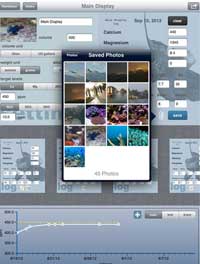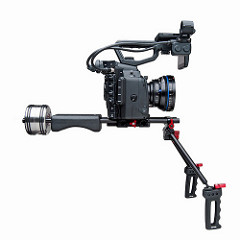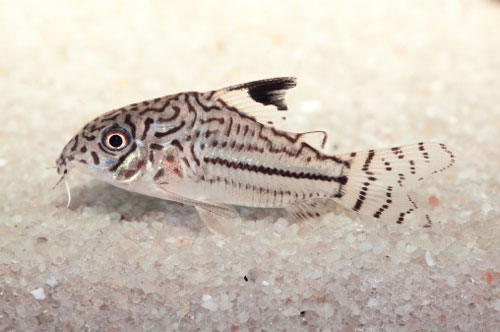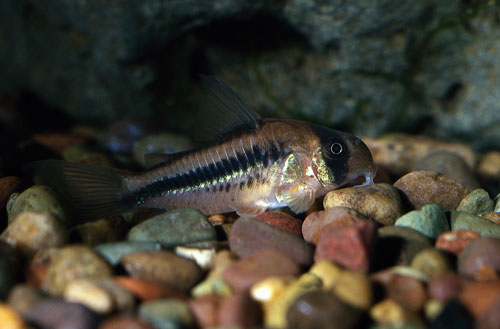
Consider How Many of Each Fish Species Will Be Appropriate to Keep
Q. I wish to create a 180-gallon system containing live rock and fish only. The tank will be 96 inches long, 18 inches wide and 24 inches high. Filtration will consist of one All-Flo Freedom filter with a MagDrive 1200 pump, plus one Aquaclear 110 outside power filter. There will also be two 200-gallon-per-hour powerheads for additional circulation. I plan to use 120 pounds of base rock topped off with 60 pounds of live rock. The substrate will be made up of 1- to 1.7-mm aragonite sand.
How do I fasten the live rock together to prevent rock slides? Should I drill it and insert rods or use marine-safe silicone? Should I do this prior to curing the live rock?
I plan to add six Chromis viridis, one Amphiprion clarkii, one Pictichromis bicolor, one Paracanthus hepatus, one Genicanthus lamarcki, two Serranus tortugarum, one Centropyge flavissima and one Chaetodon kleinii. These fish will be added over eight months, and I plan to add them at five intervals during that time (the Chromis first and the angels last). Do you think the bioload is too high?
-- Marc Schwarz
Middle Island, New York
A. Your system sounds fine for the number of fish you plan to add, but if you do the math, I think you will find that the total capacity of your tank is actually 172 gallons, not 180. Because no one fills the tank all the way to the top, the actual volume in the tank is probably going to be lower, due to the water height. Factor in the space that the rock and sand will take up, and you may end up closer to 150 gallons in the end.
It’s not really clear to me what you mean by base rock and what you mean by live rock. Are you saying the base rock is dead, dried coral rock? If not, the base rock and live rock are more than enough to filter the water of nitrogenous wastes produced by your fish.
Your fish selection is a little sparse, so you might want to consider adding a few more. Most people would want a pair of clownfish, so they will pair up and begin nesting. A single Lamark’s angel is also an odd choice, as this fish lives in harems consisting of a single male and several females. You might want to consider a pair of these, as well, instead of a single specimen.
Flame hawkfish (Neocirrhites armatus) can add a splash of red, as well as personality, to a marine tank. Photo Credit: J.C. DelbeekI have never kept the chalk bass (Serranus tortugarum); check to make sure that you can keep two in a tank. The butterflyfish you selected is a hardy species but not very colorful, so you might want to consider something more colorful such as a threadfin (C. auriga) or raccoon (C. lunula) butterflyfish. A pair of flame hawks (Neocirrhites armatus) would also look good in your tank — they will add a nice splash of red and personality to the tank.
How you attach the rock has a great deal to do with how you plan to aquascape the tank. Most hobbyists simply stack the rocks in a stable order so that no attachments are necessary. Silicone glue is useless for holding rock together, as it cannot hold onto the rock. It’s better to use a marine epoxy or underwater cement. You can drill holes and insert acrylic pegs if you like. Again, it all depends on what you want to create in the way of an aquascape. We cover a wide range of aquascaping techniques in the The Reef Aquarium books, Volumes One and Three, by myself and Julian Sprung.
Coral Tissue Loss
Q. I purchased a bubble coral a year ago, and it seemed to die off. I noticed a few months ago that it came back in a couple of places. Two days ago, I noticed it had detached itself from the base and showed up today on the sand. It does not look dead. Will it attach itself back? How can I help it?
-- Dianna Young
Paduch, Kentucky
A. It’s not unusual for corals to die back, only to regrow new tissue in selected areas of the skeleton. These small patches eventually lay down new skeleton and grow larger, but they do not usually fill in adjacent old skeleton with tissue. I am not surprised you found some areas that are regrowing, but it is somewhat worrying that the tissue is detaching from the old skeleton.
In several coral genera, it’s not unusual for sections of the coral to drop off small satellite colonies. This is particularly common in the Faviidae family (e.g., Favia, Favites, Goniastrea, Oulophyllia, Platygyra and so on). In these genera, there is a swelling of the tissue to such a size that it eventually droops downward from the coral surface. This strains the tissue until it eventually tears away and falls to the bottom. This tissue mass often has some skeletal growth develop within it before it drops off, or it does so shortly thereafter. These satellites grow in size and eventually attach to the substrate.
In the Caryophylliidae family, which includes your bubble coral, a similar situation can occur. It is often common for species with large coral septa (a finlike section of the skeleton), such as bubble coral and Euphyllia species, to have these break and then hang downward. This stretches the surrounding tissue so that over the course of several weeks, the tissue eventually breaks away from the coral and falls to the bottom. These corals most likely will not attach and will just grow in size where they lie, eventually becoming large enough to stay in place.
If there was no damage to the coral or some other disturbance to it that would cause it to drop the tissue it still had, I would take a look at water quality, specifically phosphate and alkalinity levels. Phosphate should be below 0.02 mg/l, and alkalinity should be between 2.0 and 2.5 meq/l.
 Reefdoser Pro for iPad Ships
Reefdoser Pro for iPad Ships
 Catch More Salmon - Follow These Simple To Implement Techniques
FLAT Rigs outriggers, shock cord snubber, and rigging kit i
Catch More Salmon - Follow These Simple To Implement Techniques
FLAT Rigs outriggers, shock cord snubber, and rigging kit i
 Keep Your Aquarium Clean With These Tank Tools
Success in maintaining a freshwater system takes applied kno
Keep Your Aquarium Clean With These Tank Tools
Success in maintaining a freshwater system takes applied kno
 Red Worms
Q. I’ve seen advertisements for red worms as a food for fish
Red Worms
Q. I’ve seen advertisements for red worms as a food for fish
 Top 10 Fishkeeping Mistakes
Aquarists can say they’ve never made a mistake in their fish
Top 10 Fishkeeping Mistakes
Aquarists can say they’ve never made a mistake in their fish
Copyright © 2005-2016 Pet Information All Rights Reserved
Contact us: www162date@outlook.com